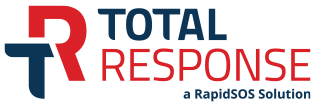02/14/24
Emergencies can change in a split second, which is why 911 telecommunicators must be prepared for any scenario that could be on the other end of the phone. Yet, only 44% of telecommunicators surveyed in a recent NENA study felt adequately trained to respond to most crises.*
Traditionally, emergency services often relied on separate systems (if any) for law, fire, and medical emergencies. However, the creation of multi-service software has revolutionized the way these professionals operate. Multi-service software offers public safety professionals a unified platform that covers all aspects of emergency response.
A multi-service platform enhances the capabilities of those who answer the call by providing a unified way of quickly making decisions. It is a decision support system for all calls, including complex calls that require protocols from more than one service to streamline communication and pre-arrival instructions. This helps keep all responders safe with immediate and cross-service updates. Simply put, it is a game changer.
Delivering a unified response.
Using a multi-service call handling platform can help streamline the dispatching of emergency services with diverse emergencies. Instead of toggling between different systems and calls, call handlers can access protocols for law enforcement, fire, and medical situations all within a single interface. This not only saves valuable time but also ensures a more cohesive and coordinated response.
Most 911 calls require at least two types of emergency services, whether it’s law and fire, law and medical, or all the above. Having cross-service cooperation is crucial for an efficient and safe response for both the callers and on-scene responders.
For a disorderly conduct, aggravated assault, or domestic violence call for example, your law enforcement and EMS responders need to know if there are any weapons present, if the environment is secure, how many injured people are present, and more. These details impact how both medical and law responders will enter the scene. When using a multi-service system, your responders have access to the same information at the same time. Everyone is on the same page for every call.
Assessing the big picture.
A multi-service platform provides standardized protocols for each type of emergency, guiding call takers through the necessary steps to assess the situation and help ensure an appropriate response. This standardized approach minimizes the risk of errors and ensures a consistent level of professionalism.
For a structure fire call, firefighters need to know if there are any known injuries to be aware of. That information needs to be conveyed to both medical and fire responders. With multi-service software, all responders have access to the same information and can evaluate the full situation and move forward with caution if needed.
Interoperability is a team effort.
A multi-service platform enhances communication and collaboration among different emergency response teams. If law enforcement is on their way to a breaking and entering call and in that time the homeowner on the phone with 911 is shot by the intruder, they can simultaneously dispatch EMS and alert the enroute police officer, so all responders are aware of the situation as it evolves.
With real-time updates and a centralized system, police officers, firefighters, and medical personnel are all aware of the situation as details change or the emergency progresses, improving overall situational awareness. This leads to more efficient responses, ultimately benefiting the community and saving lives –the lives of callers and responders.
Be prepared for anything.
The adoption of multi-service software for 911 call handling is a powerful tool that significantly enhances the efficiency and safety of emergency response. A unified platform for law, fire, and medical and mental health emergencies empowers telecommunicators, police officers, and firefighters to work together seamlessly in the critical moments when every second matters.
As technology continues to advance, the integration of multi-service software stands as a testament to the commitment of emergency responders to deliver the highest level of service to the communities they serve.
You may not need access to all emergency services and protocols for every 911 call, but when you do, you’ll have it at your fingertips – and so will your callers.
Whether your agency answers several types of calls or operates as a single service, our checklist will help you evaluate and select the right provider and partner.
* 2023 Carbyne and NENA Pulse of 9-1-1: State of the Industry Survey









